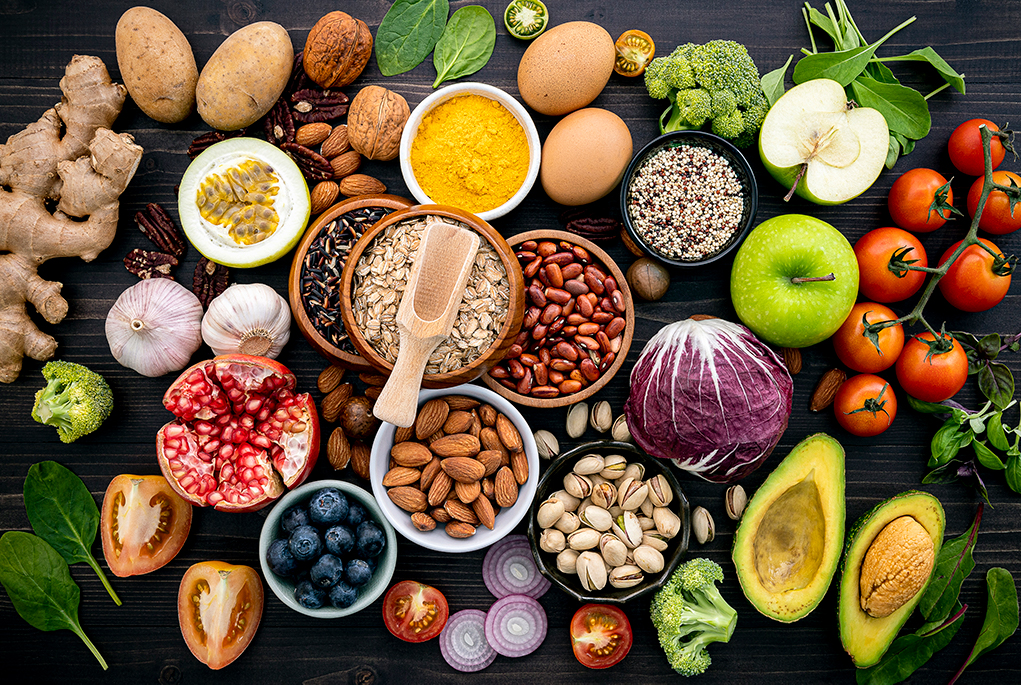
There are many things you can eliminate from your diet. Some foods are harmful to your health. Others are necessary. Refined carbohydrates and sugar are the main culprits in weight gain. Avoid processed meats, and sugars. Healthy foods are also possible. Try replacing white bread with whole grains pasta if you are a fan of whole grain bread for breakfast. You can replace sugary cereals with grilled fruit.
It is easy to reduce sugar and empty calories by including more fruits and veggies in your diet. Vegetables and fruits have many health benefits and are rich in antioxidants. Reduce how much sugar you drink in tea or coffee. Make your beverage more flavorful by adding lemon or ginger. Add sugars and other preservatives should not make up more than 5% to your energy intake.
Reduce the intake of processed foods when you're trying to lose weight. Sugar is found naturally in many foods, so removing it completely from your diet isn't practical. Additionally, it has been linked to heart disease and diabetes. Avoid canned and packaged foods, and avoid fast-food restaurants. Consume whole-grain and whole wheat foods if you desire to feel full and active.

A key first step to losing weight is to eliminate junk food and sugary drinks. You will feel happier, save money, and improve your overall health. You can also snack on healthy foods instead of eating junk foods. This will prevent you from overeating later in the day. Substituting snacks for regular meals can help you avoid eating too often.
You should also eliminate processed meats from your diet. This is one reason that high blood pressure and obesity are so common. These foods can be eliminated to help you lose weight and improve health. High-calorie food is best avoided, as it contains too many sugars.
Hidden sugars pose another major problem for sugar consumption. They can be dangerous and increase the risk for cancer, even though they aren't necessarily bad. You should reduce hidden sugar sources by substituting natural sweeteners (stevia, unsweetened applesauce, or unsweetened juices) for them. Hidden sugars are also to be avoided. Hidden sugars are often found in instant oatmeal, some processed sauces, and salad dressings.
High amounts of added sugar can lead to high calories. They can be very filling, and they tend to make you feel fuller. Low in sugar foods are best to eliminate these foods. Also, you should cut down on high-fat food. High-fat granola bar is one example. For those who have a sweet tooth you can replace them by fruit-basedgranola.

A second habit you should develop is the habit of eating breakfast every morning. It's vital to eat breakfast every morning. Skipping breakfast will lead to eating more throughout the day. Regular breakfast eaters have lower BMIs. They are also more productive at school, work and in the boardroom. A bowl of whole grain cereal with low fat dairy will help you keep hunger at bay and keep your body active throughout the day.
Even if it's not clear how to make a certain food, there are some rules you can observe. Social media is full of images of unhealthy food. Research has shown that even though you aren't hungry, looking at photos of unhealthy food can increase your hunger hormones. You should limit the amount of carbohydrate in your daily meals.
FAQ
How does an anti-biotic work?
Antibiotics are medications that kill harmful bacteria. Antibiotics are used for treating bacterial infections. There are many kinds of antibiotics. Some are taken orally, some are injected, and others are applied topically.
Antibiotics are often prescribed to people who have been exposed to certain germs. One example is if someone has had chickenpox and wants to prevent shingles. For those with strep-thorphritis, an injection of penicillin could be administered to prevent them from getting pneumonia.
Doctors should prescribe antibiotics to children. Children are at greater risk of developing side effects from antibiotics than adults.
Diarrhea, the most common side-effect of antibiotics, is probably diarrhea. Other possible side effects include diarrhea, nausea and vomiting, allergy reactions, dizziness, dizziness, stomach cramps, nausea, vomiting or allergic reactions. Most of these symptoms disappear after the treatment is completed.
How can I live the best life possible every day?
Finding out what makes your heart happy is the first step to living a fulfilled life. Once you have a clear understanding of what makes you happy you can go backwards. You can also ask other people what they do to live the best lives possible every day.
You can also check out books like "How to Live Your Best Life" from Dr. Wayne Dyer. He discusses finding happiness and fulfillment throughout our lives.
Does being cold give you a weak immune system?
Cold causes a decrease in immune system strength. This is because white blood cells are less effective at fighting infection. Cold can also make you feel better as your body releases endorphins to your brain, which reduce pain.
How do I find out what's best for me?
Listen to your body. Your body is the best judge of how much exercise, food and rest you should get. Your body will tell you what to do so that you don't go overboard. Be aware of your body and do what you can to maintain good health.
How can I lower my blood pressure
First, you must determine what is causing high blood pressure. Next, take steps that will reduce the risk. You can do this by eating less salt, losing weight, or taking medication.
Also, make sure to get enough exercise. You can also walk if you don’t have the time.
You should join a gym if you are unhappy with your exercise routine. It's likely that you will want to join a gym with other people who are working towards the same goals as you. It's easier for you to exercise if you know that someone will be watching you at the club.
Statistics
- nutrients.[17]X Research sourceWhole grains to try include: 100% whole wheat pasta and bread, brown rice, whole grain oats, farro, millet, quinoa, and barley. (wikihow.com)
- According to the 2020 Dietary Guidelines for Americans, a balanced diet high in fruits and vegetables, lean protein, low-fat dairy and whole grains is needed for optimal energy. (mayoclinichealthsystem.org)
- WHO recommends consuming less than 5% of total energy intake for additional health benefits. (who.int)
- In both adults and children, the intake of free sugars should be reduced to less than 10% of total energy intake. (who.int)
External Links
How To
What does the "vitamins” word mean?
Vitamins can be described as organic compounds found in food. Vitamins allow us to absorb nutrients from food. Vitamins cannot be produced by the body. They must be acquired from food.
There are two types if vitamins: water soluble, and fat soluble. Water soluble vitamins dissolve easily in water. Some examples include vitamin C,B1 and B2 vitamins (thiamine), B2 and riboflavin, B3 and B6 vitamins (niacin), folic acids, biotin, pantothenic acids, and cholesterol. Fat-soluble vitamins can be stored in the liver or in fatty tissue. These include vitamin D, E and K, as well as beta carotene.
Vitamins are classified according to their biological activity. There are eight major vitamin groups:
-
A - essential for normal growth and maintenance of health.
-
C - vital for proper nerve function, and energy production.
-
D - essential for healthy bones, teeth, and gums.
-
E is necessary for good vision, reproduction.
-
K – Required for healthy nerves & muscles.
-
P - Vital for strong bones and teeth.
-
Q - aids digestion and absorption of iron.
-
R - Required for red blood cell production
The recommended daily allowance (RDA), for vitamins, varies depending upon age, gender, or physical condition. The U.S. Food and Drug Administration (FDA) sets the RDA values.
For adults aged 19 and older, the RDA for vitamin B is 400 micrograms daily. Pregnant women require 600 micrograms daily to support fetal development. Children ages 1-8 require 900 micrograms per day. Children under 1 year old require 700 micrograms daily, while infants over one year old need 500 micrograms every day. This decreases between 9 and 12 months.
Children aged between 1-18 years require 800 micrograms of sugar per day, while overweight children need 1000 micrograms. Children who are underweight receive 1200 micrograms every day to meet their nutritional requirements.
2200 mg of vitamin A per day is required for children aged 4-8 who have been diagnosed by anemia.
2000 micrograms are required daily for good health in adults over 50. Women who are pregnant or breastfeeding need 3000 micrograms per day due to increased nutrient requirements.
Adults over 70 need 1500 micrograms daily, as they lose 10% of their muscle every ten years.
Women who are pregnant or nursing need more than the RDA. Pregnant woman need 4000 micrograms daily in pregnancy, and 2500 per day after childbirth. Breastfeeding mothers need 5000 micrograms per day when breast milk is being produced.